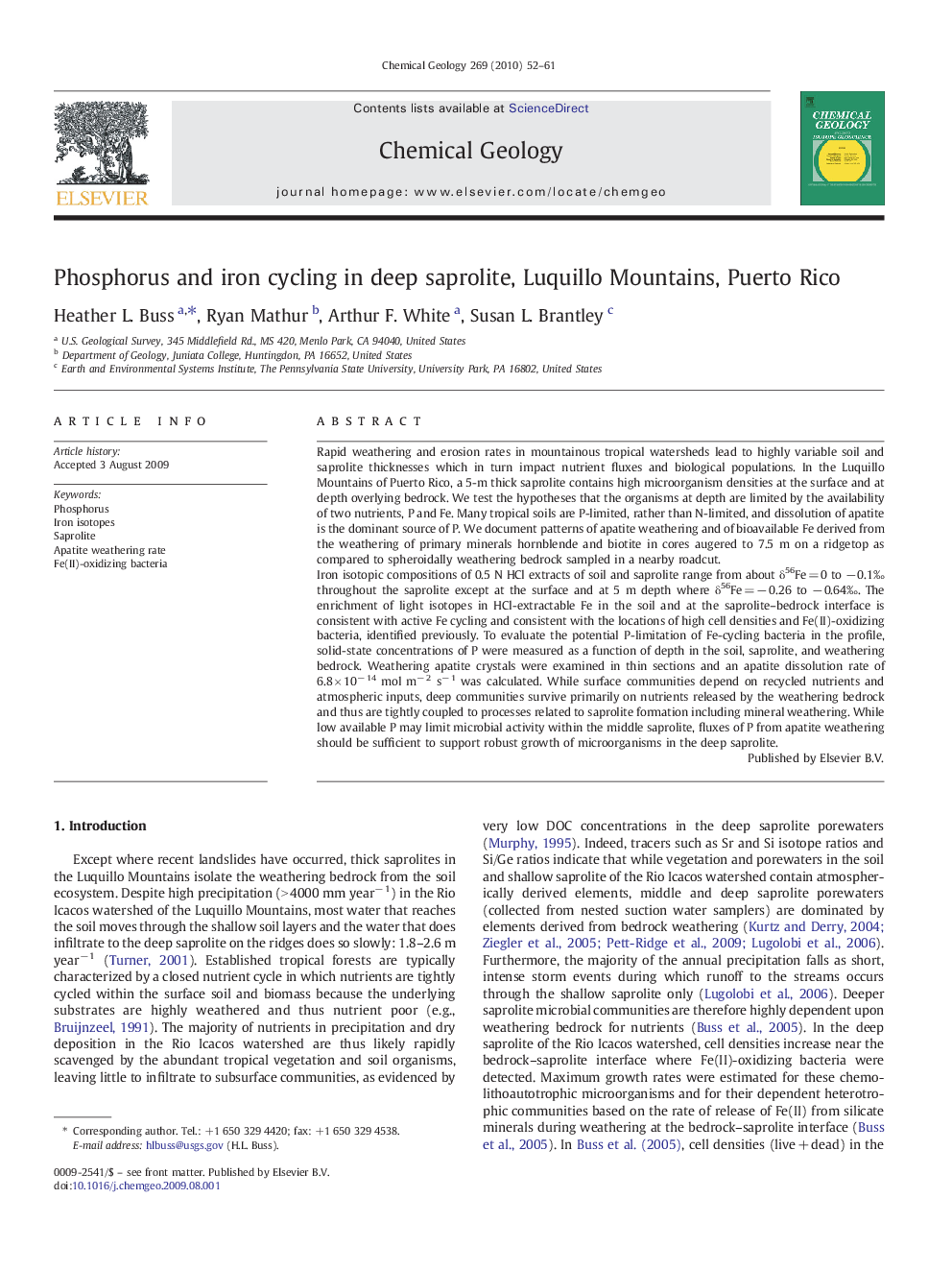| Article ID | Journal | Published Year | Pages | File Type |
|---|---|---|---|---|
| 4700130 | Chemical Geology | 2010 | 10 Pages |
Rapid weathering and erosion rates in mountainous tropical watersheds lead to highly variable soil and saprolite thicknesses which in turn impact nutrient fluxes and biological populations. In the Luquillo Mountains of Puerto Rico, a 5-m thick saprolite contains high microorganism densities at the surface and at depth overlying bedrock. We test the hypotheses that the organisms at depth are limited by the availability of two nutrients, P and Fe. Many tropical soils are P-limited, rather than N-limited, and dissolution of apatite is the dominant source of P. We document patterns of apatite weathering and of bioavailable Fe derived from the weathering of primary minerals hornblende and biotite in cores augered to 7.5 m on a ridgetop as compared to spheroidally weathering bedrock sampled in a nearby roadcut.Iron isotopic compositions of 0.5 N HCl extracts of soil and saprolite range from about δ56Fe = 0 to − 0.1‰ throughout the saprolite except at the surface and at 5 m depth where δ56Fe = − 0.26 to − 0.64‰. The enrichment of light isotopes in HCl-extractable Fe in the soil and at the saprolite–bedrock interface is consistent with active Fe cycling and consistent with the locations of high cell densities and Fe(II)-oxidizing bacteria, identified previously. To evaluate the potential P-limitation of Fe-cycling bacteria in the profile, solid-state concentrations of P were measured as a function of depth in the soil, saprolite, and weathering bedrock. Weathering apatite crystals were examined in thin sections and an apatite dissolution rate of 6.8 × 10− 14 mol m− 2 s− 1 was calculated. While surface communities depend on recycled nutrients and atmospheric inputs, deep communities survive primarily on nutrients released by the weathering bedrock and thus are tightly coupled to processes related to saprolite formation including mineral weathering. While low available P may limit microbial activity within the middle saprolite, fluxes of P from apatite weathering should be sufficient to support robust growth of microorganisms in the deep saprolite.
